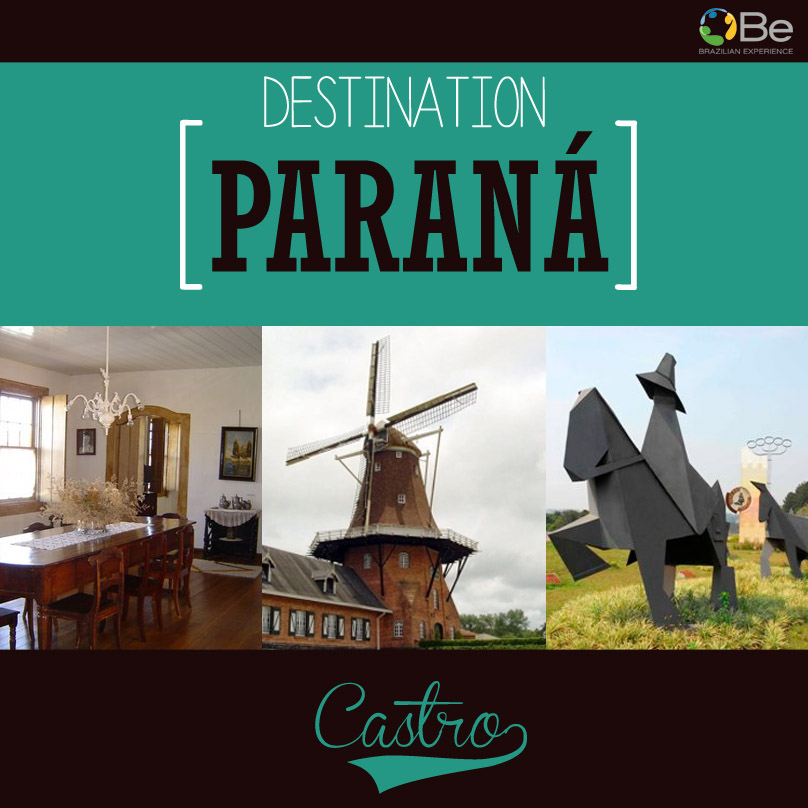
Castro is the third oldest city in Paraná state. The city was founded in 1778. Castro was an obligatory path for the tropeiros, group of men who came up from Viamão, in Rio Grande do Sul state, going to Sorocaba, in São Paulo state, transporting cattle. There are different cultural attractions in Castro, such as the Sant’Ana Church, the Tropeiro Museum and the Castrolanda Colony.
Sant’Ana Church
The original chapel was built by slaves in 1704, in honor of St. Anne. It went through several other reforms, and in 1876 it was fully completed, taking its current appearance. A year after that, one of the towers was built and the second one, only years later, between 1945 – 1960, completed by Domitian de Oliveira, who after an error in the planning, made it different from the first one. This feature is now considered a milestone in the history of the city.
Tropeiro Museum
The house where the museum is located was built in the eighteenth century by the family Carneiro Lobo. Its collection includes approximately 400 pieces. In addition to portraying the tropeiro life, it presents documents and historical objects, as well as sacred pieces, and other types of crafts.
The museum collection includes typical clothing and gear as well as several tools used by this group who explored the interior of Brazil and founded several cities, including Castro itself. The Museum opened in 1977, and was designed by Judith Carneiro de Mello, with the support of the Mayor of Castro, Lauro Lopes. The building where the museum is located was one of the first houses in the city. Its architectural style is very traditional and the building is currently listed as historical heritage.
Castrolanda Colony
Castrolanda is a colony that was founded by Netherlands immigrants between 1951 and 1954. Its economy is based on agricultural production and dairy farming which is one of the most important in this region that is considered the largest dairy in Brazil due to their genetic quality. It also has a considerable production of grain, mostly soy and beans.
In 1991, to perpetuate the traditions and relive the history, the Dutch community in Castrolanda, decided to create an Immigrant Museum, a replica of the first residences built in the area. It also displayed furniture and objects donated by families of Castrolanda to show this piece of “Dutch Paraná”.
Years later, on November 30th, 2001, on the occasion of the fiftieth anniversary of the Colony Castrolanda, the memorial of Dutch immigration popularly called “The Mill”, was created. It then became the main symbol of the Colony. It is considered one of the largest windmills in the world: De Immigrant (The Immigrant) is a large monument 26 meters wide; it has two millstones able to produce up to 3,000 kg of wheat flour.
It has a curious internal architecture all wood and no nails. It is 37 meters high (from the ground to the tip of the wing upright). Visitors may climb 4 floors, and learn all about the history of the Dutch immigration. All mechanisms, gears, pins and fittings of the windmill are made almost entirely of wood. The project is signed and executed by Dutchman Jan Heijdra, an expert on windmills, as a tribute to the Dutch immigrants of the 50s that colonized the region. Besides the mill, the building houses an events center, a museum, a restaurant, a library and a crafts store. It is open from Friday to Sunday and holidays from 14:00 until 18:00. For groups please schedule by phone (42) 3234-1231.



